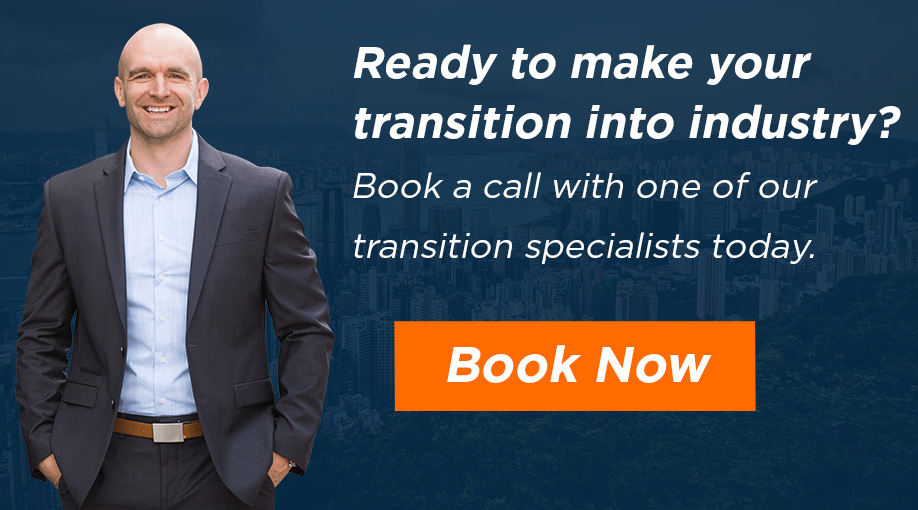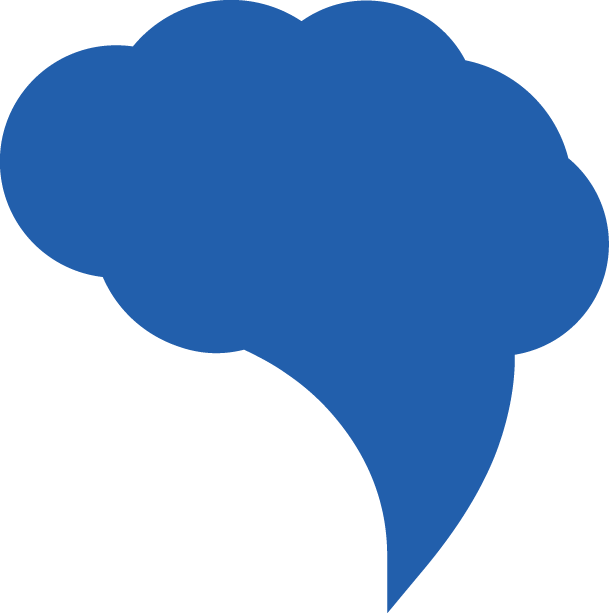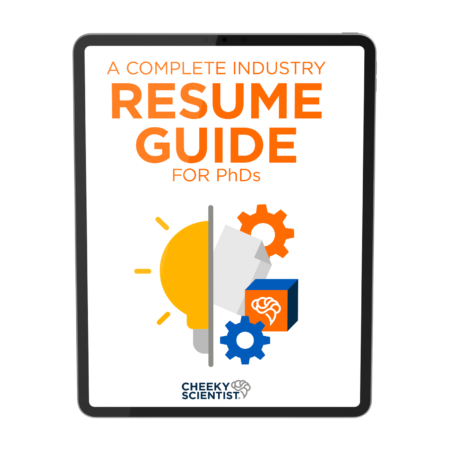How PhDs Can Use The STAR Method To Ace Their Industry Interview

I am happy to announce that I have accepted a position as a Scientist / Analytical Team Lead.
I have been wanting to write a transition story of my own for so long….so here it is!
I know I probably didn’t do everything right, made mistakes, had doubts, and my confidence faltered many times…..but I kept on pushing. And I am so glad I did.
I knew that I wanted to have a job with a dual role, that of a bench-scientist, and also having responsibilities of a project to manage.
My transition to this job took about 8 months.
So there’s that big ugly gap on my resume that I was so afraid of, but it didn’t even matter in the end.
I started polishing my resume and LinkedIn profile, attending as many networking events as I could in the area, connecting to people on LinkedIn, setting up informational interviews.
I attended a networking event and made a few valuable contacts, one of whom gave me his email and asked me to send in my resume.
I reached out to him and expressed my interest in a couple of positions.
This led to an HR phone screen.
These were the HR screening questions:
- Tell me about your background
- How does your experience fit into the job description
- What kind of challenges do you expect in this role
- How did you hear about our company and this position specifically
- What is your flexibility with a start date
- Do you have any travel restrictions
- Do you need visa sponsorship
- What are your salary expectations?
The phone screen went well, but I kept waiting to hear back about the next steps.
I kept following up every 2 to 3 weeks and finally 2 months later, I had a phone interview with the Group Leader who was also the hiring manager for the position.
This was a 30 min phone call where the hiring manager described in detail what their department does, what the position entails, and asked me the following questions:
- How do you think your experiences relate to the job
- Tell me more about your start-up industry experience
- What were your job responsibilities
- Where do you see yourself in 5-10 years
- Do you have any questions for me (we had already spoken for about 20 mins or so, so I asked him 3-4 questions I had already prepared to ask).
I kept following up every 2 to 3 weeks, for about 3 months, but didn’t hear anything about an on-site interview.
They never dropped me from the candidacy, but I learned that for several reasons their hiring process was going slower than usual.
I had to have patience and it was hard, and painful.
During this time, I kept networking elsewhere for other positions.
Four months after the initial phone interview, I decided to reach out again and asked whether there was any progress to bring me on-site for the position.
Another month went by and I was able to reach out again to the hiring managers who told me that they thought I was overqualified for the 1st position, and that they wanted me to have another phone interview for a higher-level position that required a PhD.
This was really exciting news, but slightly nerve-wracking as well!
This second phone interview, for this PhD level job, was more detailed than the first one.
They asked me some behavioral questions such as:
- Tell me how you would fit into this role
- Do you have any project management experience
- How would I go about setting up some assays and
- Some more detailed technical questions about assay development.
Within 3 days of my phone interview, they called me to schedule an on-site interview!
At the on-site interview I gave a 45 minute talk and had 7 one-on-one interviews (30 mins each) with the various members of the group, the director, other team-leaders, and lunch with the scientists on the team.
Since this job also has an Analytical Team Lead function, which requires working with people from many different departments, I was also asked some classic behavioral questions such as:
- Have you had any conflicts, how did you handle them,
- Have you had any time management problems, how did you handle those
I used the STAR method all the way for these questions.
I had a great feeling after I came home from the interview!
Within 4 days of my on-site, they offered me the job verbally with a detailed offer on salary, benefits, bonus, holidays, etc., and the following business day I received the written offer!
It was a hard and emotional process, waiting game, and frustrations.
But now it is behind me. And it will be for all of you too, I truly believe it!
Why You Need To Practice And Prepare Intensely For An Industry Interview

You are being judged from the moment an employer learns about you as a potential candidate.
Before they even speak to you, they will check your resume and your online profiles.
But you are a PhD, so you look great on paper!
You are highly qualified and skilled.
But, the interview is the key next step, because employers don’t want to hire you just based on your skills, they need to know that you will work well at their company.
And according to Undercover Recruiter, 33% of bosses know within 90 seconds of an interview if they are going to hire someone or not.
You must be ready as soon as you set foot onto the company’s property.
They will immediately start to evaluate your fit for the company culture.
You must be ready to showcase your best self in interviews.
Which means you need to practice.
Out loud.
With other people.
And you need to practice the right way to answer questions – using the STAR method.
Workable recently reported that on average, a company will interview between 13-19 per hire.
You need to demonstrate that you are the best candidate out of those 13-19 people.
Being well-versed in the STAR method and highly prepared for your interview is the best strategy to show you are the best candidate.
5-Step STAR Method Strategy For Answering Behavioral Interview Questions
As a PhD you are comfortable talking about technical details and intricate data results.
But this is not going to earn you a ‘win’ at an interview.
You need to demonstrate your soft skills and your technical prowess in a way that is relatable.
And the way to do that is with the STAR method.
Here is the 5-step strategy for executing the STAR method as a strategy for answering behavioral interview questions…
1. Situation – set the scene and describe the problem.
When answering interview questions you need to tell your interviewers a story.
Stories are how we, as humans, best understand the world around us.
People will forget facts, but they will remember stories.
So you need to tell a story.
This doesn’t mean you should make make up a fake story, it just means that you need to use storytelling to make your point.
And the first part of the story you need to set up is the context.
The situation – the who, what, where and when of your story.
Describe the situation you were in so that your interviewers can understand what you were doing, feeling, and thinking.
You want it to be clear what your role was in the situation and that an overall picture has been painted.
Remember, you have complete control over the context that you give your interviewers for the story so choose your words carefully, and realize that this context will influence the rest of your interview.
Here two examples of how you can describe the situation when using the STAR method for interview questions:
Question: “Tell me about a time you had to deal with conflict.”
Situation Answer: “During the 2nd year of my PhD I was working on a project where I was collaborating with a lab at a different university. We were at a pivotal moment in the project and were deciding which direction the project should go.”
Question: “What is your biggest weakness?”
Situation Answer: “During the third year of my PhD, I started working on xyz, the final part of my project. I was confident in my skills so far, so I was excited for this next phase. But it involved using a technique that was brand new to me.”
Setting up the context, the situation, is just the first part of the story.
Once you have set the scene the next phase is to define the specific Task that you need to accomplish.
2. Task – explain the goal you were trying to accomplish and the why.

The task portion of the STAR method is where you will introduce the problem that you are trying to solve in the story.
In every story you tell using the STAR method there needs to be a problem or a challenge that you faced and overcame.
You want show your interviewers that you can work through a variety of problems.
No one is perfect and you should not try to pretend to be perfect in an interview, this will only make you look like you are not being honest.
This is why the STAR method works so well, it gives you the opportunity to present a problem or challenge that you faced, which makes you relatable, and then gives you the opportunity to describe how you overcame that struggle, which makes you seem resilient.
Employers want to hire relatable and resilient people, the STAR method allows you to demonstrate those traits.
Here are the two examples from point 1, adding in the task part of the answer:
Question: “Tell me about a time you had to deal with conflict.”
Situation Answer: “During the 2nd year of my PhD I was working on a project where I was collaborating with a lab at a different university. We were at a pivotal moment in the project and were deciding which direction the project should go.”
Task Answer: “My lab and the other lab had very different ideas about what the next steps of the project should be. Discussions were quite heated and I could see that both my PI and the other PI were emotionally invested in what they wanted. It looked as though the project was about to fall apart and the environment was very tense.”
Question: “What is your biggest weakness?”
Situation Answer: “During the third year of my PhD, I started working on xyz, the final part of my project. I was confident in my skills so far, so I was excited for this next phase. But it involved using a technique that was brand new to me.”
Task Answer: “As soon as I started researching this new technique I knew that I was out of my depth. I was confused and struggled to understand. I started to turn experiments but the data I was getting was not good. It was frustrating, but I wanted to prove that I could do this.”
Once the problem has been described you must tell the parts of your story that lead to the resolution.
Never leave a story ending with the challenge.
3. Action – what steps did YOU take to solve the problem.
After you have described the challenge or task to your interviewers move on to the section where you tell them what you did to solve the problem or overcome the challenge.
Take ownership over the actions that you took.
Don’t blame other people for the problems, instead focus on what you did specifically to reach the desired goal.
This part of the STAR method is very important because it shows the potential employer an example of how you will act when on the job.
Give an example that demonstrates that you would be a great person to work alongside.
Here are the 2 examples from above with the action portion added in:
Question: “Tell me about a time you had to deal with conflict.”
Situation Answer: “During the 2nd year of my PhD I was working on a project where I was collaborating with a lab at a different university. We were at a pivotal moment in the project and were deciding which direction the project should go.”
Task Answer: “My lab and the other lab had very different ideas about what the next steps of the project should be. Discussions were quite heated and I could see that both my PI and the other PI were emotionally invested in what they wanted. It looked as though the project was about to fall apart and the environment was very tense.”
Action Answer: “Before the next meeting of our labs, I dug into the data. I thought that both of our labs would respond a data driven decision. I put together a small presentation with all the relevant data clearly laid out. I took this to the meeting so that we could consistently return to the data when discussing what to do next.”
Question: “What is your biggest weakness?”
Situation Answer: “During the third year of my PhD, I started working on xyz, the final part of my project. I was confident in my skills so far, so I was excited for this next phase. But it involved using a technique that was brand new to me.”
Task Answer: “As soon as I started researching this new technique, I knew that I was out of my depth. I was confused and struggled to understand. I started to turn experiments but the data I was getting was not good. It was frustrating. I wanted to prove that I could do this.”
Action Answer: “I kept struggling with the new technique. I realized that I was wasting time with my stubbornness. I decided to reach out for some help. I found a colleague who had work with xyz technique a lot and asked if they would provide some training and guidance for me.”
As a PhD, you are taught to think as a collective when it comes to your projects and results.
But in your interview it’s important that you use the first person when describing what you did and how your actions lead to the desired result.
4. Result – what was the outcome and how did you make it happen.

The last part of the STAR method is the result.
Just like how your resume should have strong results, your interview answers must lead to a clear and powerful result.
Employers want to see that you understand how important results are and that you know how to achieve them.
Make sure that this final part of your story is very clear.
You don’t want to have an anti-climactic STAR method answer, bring it home with this section and own the result that you help achieve.
Here are the 2 examples above with the result section added in:
Question: “Tell me about a time you had to deal with conflict.”
Situation Answer: “During the 2nd year of my PhD I was working on a project where I was collaborating with a lab at a different university. We were at a pivotal moment in the project and were deciding which direction the project should go.”
Task Answer: “My lab and the other lab had very different ideas about what the next steps of the project should be. Discussions were quite heated and I could see that both my PI and the other PI were emotionally invested in what they wanted. It looked as though the project was about to fall apart and the environment was very tense.”
Action Answer: “Before the next meeting of our labs, I dug into the data. I thought that both of our labs would respond a data driven decision. I put together a small presentation with all the relevant data clearly laid out. I took this to the meeting so that we could consistently return to the data when discussing what to do next.”
Result Answer: During the meeting, instead of each lab bringing their emotions into the discussion, I directed us to the data and we focused our attention on the data. By the end of the meeting we were able to agree on how the project should move forward. This was such a change from the beginning and it allowed the project to continue. The project proved to be a great success and we ended up publishing two papers from the collaboration.”
Question: “What is your biggest weakness?”
Situation Answer: “During the third year of my PhD, I started working on xyz, the final part of my project. I was confident in my skills so far, so I was excited for this next phase. But it involved using a technique that was brand new to me.”
Task Answer: “As soon as I started researching this new technique I knew that I was out of my depth. I was confused and struggled to understand. I started to turn experiments, but the data I was getting was not good. It was frustrating. I wanted to prove that I could do this.”
Action Answer: “I kept struggling with the new technique. I realized that I was wasting time with my stubbornness. I decided to reach out for some help. I found a colleague who had work with xyz technique a lot and asked if they would provide some training and guidance for me.”
Result Answer: “The training I got from my colleague was so helpful. They helped me understand the technique and provided guidance for me as I continued to work on xyz. I was able to master the technique and eventually I trained several other people in my lab on the technique. This allowed the lab to continue using xyz and investigating the project even after I graduated.”
When describing your result, do your best to relate the outcome to industry.
This doesn’t mean you need to show that your actions create a profit or a new product, but just think about a company when you are discussing your result.
5. Practice, out loud, in front of other people.
The final thing you need to do is practice!
If you really want to succeed in your interview you need to practice a lot.
You can write down your answers to common questions as a starting point, but this is not enough.
Once you have some STAR method stories ready, practice them out loud.
Say the answers to yourself, you may even want to do it in the mirror so that you can see your body language and facial expressions as you talk.
Next, and most importantly, set up mock interviews with your friends, family or colleagues.
Choose people who will give you honest and constructive feedback.
Practicing with another person is so important.
There are extra nerves that go along with having to talk in front of someone else, and with mock interviews you can prepare yourself for those nervous feelings.
Other people might also ask you questions that you hadn’t thought of before and you will become even more prepared for a real interview.
The interview is one of the toughest parts of your job search. It’s a nerve-wracking process where you have to meet strangers and prove that they should hire you. So to do well in an interview you must prepare thoroughly, and using the STAR method is the best way to prepare your interview question answers. To use the STAR method follow this process, situation – set the scene and describe the problem, task – explain the goal you were trying to accomplish and the why, action – what steps did you take to solve the problem, result – what was the outcome and how did you make it happen and finally practice, out loud, in front of other people.
If you’re ready to start your transition into industry, you can apply to book a free Transition Call with our founder Isaiah Hankel, PhD or one of our Transition Specialists. Apply to book a Transition Call here.

































